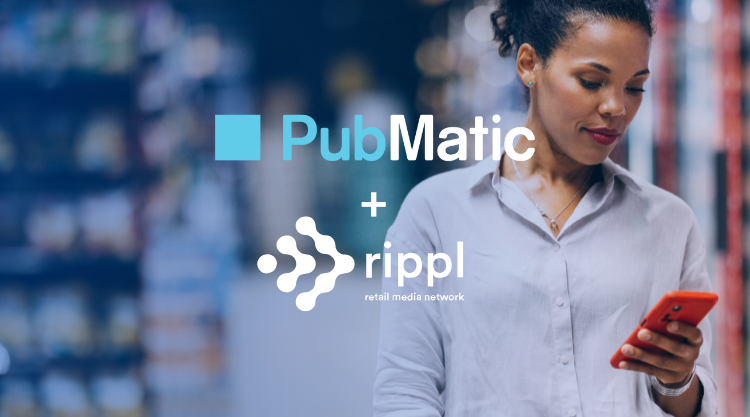Advertising addressability, a highly effective and scalable form of personalization, is essential to driving advertising ROI for brands and revenue for publishers. Yet accurate targeting of individuals and audience personas remains elusive, especially when choosing the right programmatic partner.
The starting point for success is establishing true user identities. But in the age of increasing regulations around consumer privacy, the challenges multiply. Advertisers and publishers must work together to ensure that their identity resolution strategies align, and should look to technology providers to help facilitate that relationship.
Addressability depends on assigning a unique identifier to a given user online and relies heavily on first-party data. Publishers’ first-party data in the form of email addresses, home addresses, or other volunteered personal information is the gold-standard for advertiser targeting.
In the era of a cookie-less digital ecosystem, which could also include the erasure of mobile advertising IDs, the importance of first-party data cannot be understated; it lies at the center of most addressable advertising. Tools like Connect allow publishers and data owners to improve how they transact on audience data — giving more control to the data owner and better ROI for the advertiser.
Additionally, advertisers can make use of a logged-in email address provided by a publisher (often hashed to ensure privacy). That piece of data can then be used as the basis for a pseudonymous identifier, also known as a deterministic ID.
In reality, as effective as deterministic IDs are, they are not enough to help advertisers reach scaled audience segments anytime soon. For now, brands are turning more and more to probabilistic identifiers. These are IDs that use a diverse array of information based on cross-channel signals, such as browser version, device type, time zone, and shared IP addresses.
Probabilistic IDs can build user profiles by matching anonymous data points with data from known users presenting very similar behaviors. Probabilistic IDs have the benefit of being widely and quickly scalable in a programmatic environment — provided that advertisers and publishers are partnering with the right tech providers.
The open internet’s ability to make an identity that is specific to a certain consumption environment, e.g., mobile app, desktop or some other digital channel, is the act of generating that ID, a process known as identity resolution.
A sizable industry has sprung up around identity and resolution, with multiple technology companies specializing in generating IDs at scale. But in many cases, the shortcomings of these IDs is that it can be difficult for advertisers and publishers to keep track of and eliminate cross-device redundancy.
Deterministic and probabilistic IDs present two major issues for publishers: costs associated with redundancy and costs of technology. As a result, publishers turn to numerous identity vendors, who each charge different fees. When the services of these providers overlap, publishers cannot provide advertisers with the coveted singular ID because publishers can’t determine which IDs are giving them the best revenue and yield. They cannot convey to their advertiser partners which IDs have been the most effective at driving consumer behavior.
Relying on too many different vendors and IDs adversely affects attribution and measurement. Maintaining a centralized database of non-redundant IDs is essential to the execution of cost-effective ad targeting. Media buyers would do well to look closely at which publishers offer truly addressable and measurable solutions.
Savvy brands and agencies should also inquire about such resources as they decide which publishers to invest in. Individual management interfaces for operating unique IDs offer the following benefits:
- Using a single platform dramatically cuts down on all redundancies, minimizes tech costs and makes measurement, attribution, and reporting far more effective.
- Publishers gain a better sense of how each ID contributes to revenue, and they’re better equipped to help advertiser partners with attribution.
Working with a single management interface is a major selling point for publishers who want to attract advertisers. Such an interface is also a great tool for a publisher’s sales team, making it far easier to demonstrate to brands exactly how ads will perform on their properties. Evidence that these technology products can reach unique users will make up for the disappearance of other targeting tools.
Whatever brands spend on ads, they should keep in mind the approximate amount of return on ad spend through each method. Start testing, beginning with cookie alternatives, to understand which ones are most effective. Let’s say an alternate ID approach yields a 50 percent return on ad spend. More attractive is the one that yields 80 percent.
But advertisers that do not actively seek out publisher partners with effective identity solutions will not be able to match 80 percent, 50 percent, or even 10 percent of what they’re generating. With cookies and mobile advertising IDs going away, advertisers must find alternative means of building and effectively reaching audience segments.
Publishers that rely on a non-redundant managed interface like PubMatic’s Identity Hub to offer unique IDs are ideal, and partnering with said publishers is a first, crucial step to building a new paradigm that prizes accurate, privacy compliant, and non-cookie-based addressability.
It’s also a joint effort requiring close communication between publishers and advertisers. By coming together in ways they never have before, advertisers and publishers can create a programmatic and addressable ecosystem that will drive better value for the advertiser.





